|

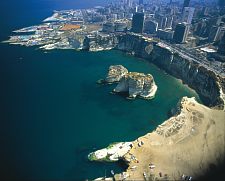
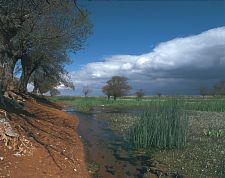
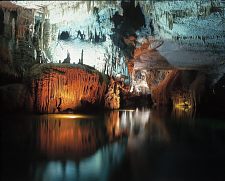
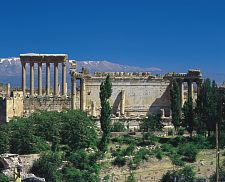
| |
Israeli Terror Revisits Qana, South Lebanon
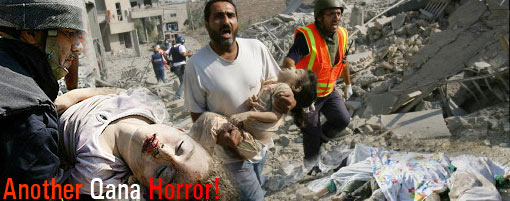
How can we stand by and allow this to go on?
A Vision of Hell
More than 54 civilians, at least 34 of them children, have been killed in a town
in south Lebanon in the deadliest Israeli strike of the conflict so far.
Displaced families had been sheltering in the basement of a house in Qana, which
was crushed after a direct hit.
Lebanon's prime minister denounced "Israeli war criminals" and cancelled talks
with the US secretary of state.
Israel said it regretted the incident - but added that civilians had been warned
to flee the village. Prime Minister Ehud Olmert said Israel would "continue to
act with no hesitation against Hezbollah" which has been firing rockets into
Israel from southern Lebanon.
Several countries have condemned the attack and renewed their calls for an
immediate ceasefire - opposed by Israel and the US.
At an urgent meeting of the UN Security Council, Mr Annan urged members to
strongly condemn the Qana attack and to put aside differences to call for an
immediate ceasefire.
British Prime Minister Tony Blair said on Sunday the situation could not
continue and that all hostilities ought to cease once a UN resolution is
adopted.
Lebanon's health minister now says about 750 people - mainly civilians - have
been killed by Israeli action in Lebanon since their operations began 19 days
ago. Hezbollah has vowed to retaliate after the Qana attack.
Intense bombing
Witnesses said the early-morning strike hit the three-storey building where
families had been sheltering in the basement, crushing it sideways into an
enormous crater.

One survivor said the "bombing was so intense that no-one could move". Elderly,
women and children were among those killed in the raid, which wrought
destruction over a wide area. Reporters spoke of survivors screaming in grief
and anger, as some scrabbled through the debris with bare hands.
"We want this to stop," a villager shouted.
"May God have mercy on the children. They came here to escape the fighting."
Rescuers found the experience too much to cope with. Our correspondent saw a Red
Cross rescue worker sitting in the sunshine just sobbing, overcome with emotion.
Israel said the Shia militant group was responsible for the Qana strike,
because it used the town to launch rockets.
The BBC's Jim Muir, in Qana, says many did not have the means - or were too
frightened - to flee.
'Heinous crime'
Lebanese Prime Minister Fouad Siniora denounced Israel's "heinous crimes against
civilians", and said there was "no room on this sad morning" for talks until
Israel had halted its attacks. He called for an "immediate, unconditional
ceasefire", and praised Hezbollah militants who were "sacrificing their lives
for Lebanon's independence".
The US secretary of state said she was "deeply saddened by the terrible loss of
innocent life. "We are also pushing for an urgent end to the current
hostilities, but the views of the parties on how to achieve this are different,"
she said.
Correspondents say the town holds bitter memories for the Lebanese. Qana was the
site of an Israeli bombing of a UN base in 1996 that killed more than 100 people
sheltering there during Israel's "Grapes of Wrath" offensive, which was also
aimed at destroying Hezbollah.
Story from BBC NEWS:
http://news.bbc.co.uk/go/pr/fr/-/2/hi/middle_east/5228224.stm | Published:
2006/07/30 17:15:11 GMT
How
can we stand by and allow this to go on?
By Robert Fisk
"The Independent" | 07/31/06 | Source:
http://www.informationclearinghouse.info/article14287.htm
They wrote the names of the dead children on their plastic shrouds. "Mehdi
Hashem, aged seven - Qana," was written in felt pen on the bag in which the
little boy's body lay. "Hussein al-Mohamed, aged 12 - Qana',' "Abbas al-Shalhoub,
aged one - Qana.'' And when the Lebanese soldier went to pick up Abbas's little
body, it bounced on his shoulder as the boy might have done on his father's
shoulder on Saturday. In all, there were 56 corpses brought to the Tyre
government hospital and other surgeries, and 34 of them were children. When they
ran out of plastic bags, they wrapped the small corpses in carpets. Their hair
was matted with dust, most had blood running from their noses.
You must have a heart of stone not to feel the outrage that those of us watching
this experienced yesterday. This slaughter was an obscenity, an atrocity - yes,
if the Israeli air force truly bombs with the "pinpoint accuracy'' it claims,
this was also a war crime. Israel claimed that missiles had been fired by
Hizbollah gunmen from the south Lebanese town of Qana - as if that justified
this massacre. Israel's Prime Minister, Ehud Olmert, talked about "Muslim
terror" threatening "western civilisation" - as if the Hizbollah had killed all
these poor people.
And in Qana, of all places. For only 10 years ago, this was the scene of another
Israeli massacre, the slaughter of 106 Lebanese refugees by an Israeli artillery
battery as they sheltered in a UN base in the town. More than half of those 106
were children. Israel later said it had no live-time pilotless
photo-reconnaissance aircraft over the scene of that killing - a statement that
turned out to be untrue when The Independent discovered videotape showing just
such an aircraft over the burning camp. It is as if Qana - whose inhabitants
claim that this was the village in which Jesus turned water into wine - has been
damned by the world, doomed forever to receive tragedy.
And there was no doubt of the missile which killed all those children yesterday.
It came from the United States, and upon a fragment of it was written: "For use
on MK-84 Guided Bomb BSU-37-B". No doubt the manufacturers can call it
"combat-proven" because it destroyed the entire three-storey house in which the
Shalhoub and Hashim families lived. They had taken refuge in the basement from
an enormous Israeli bombardment, and that is where most of them died.
I found Nejwah Shalhoub lying in the government hospital in Tyre, her jaw and
face bandaged like Robespierre's before his execution. She did not weep, nor did
she scream, although the pain was written on her face. Her brother Taisir, who
was 46, had been killed. So had her sister Najla. So had her little niece Zeinab,
who was just six. "We were in the basement hiding when the bomb exploded at one
o'clock in the morning,'' she said. "What in the name of God have we done to
deserve this? So many of the dead are children, the old, women. Some of the
children were still awake and playing. Why does the world do this to us?"
Yesterday's deaths brought to more than 500 the total civilian dead in Lebanon
since Israel's air, sea and land bombardment of the country begun on 12 July
after Hizbollah members crossed the frontier wire, killed three Israeli soldiers
and captured two others. But yesterday's slaughter ended more than a year of
mutual antagonism within the Lebanese government as pro-American and pro-Syrian
politicians denounced what they described as "an ugly crime".
Thousands of protesters attacked the largest United Nations building in Beirut,
screaming: "Destroy Tel Aviv, destroy Tel Aviv," and Lebanon's Prime Minister,
the normally unflappable Fouad Siniora, called US Secretary of State Condoleezza
Rice and ordered her to cancel her imminent peace-making trip to Beirut.
No one in this country can forget how President George Bush, Ms Rice, and Tony
Blair have repeatedly refused to call for an immediate ceasefire - a truce that
would have saved all those lives yesterday. Ms Rice would say only: "We want a
ceasefire as soon as possible,'' a remark followed by an Israeli announcement
that it intended to maintain its bombardment of Lebanon for at least another two
weeks.
Throughout the day, Qana villagers and civil defence workers dug through the
ruins of the building with spades and with their hands, tearing at the muck
until they found one body after another still dressed in colourful clothes. In
one section of the rubble, they found what was left of a single room with 18
bodies inside. Twelve of the dead were women. All across southern Lebanon now,
you find scenes like this, not so grotesque in scale, perhaps, but just as
terrible, for the people of these villages are terrified to leave and terrified
to stay. The Israelis had dropped leaflets over Qana, ordering its people to
leave their homes. Yet twice now since Israel's onslaught began, the Israelis
have ordered villagers to leave their houses and then attacked them with
aircraft as they obeyed the Israeli instructions and fled. There are at least
3,000 Shia Muslims trapped in villages between Qlaya and Aiteroun - close to the
scene of Israel's last military incursion at Bint Jbeil - and yet none of them
can leave without fear of dying on the roads.
And Mr Olmert's reaction? After expressing his "great sorrow", he announced
that: "We will not stop this battle, despite the difficult incidents [sic] this
morning. We will continue the activity, and if necessary it will be broadened
without hesitation." But how much further can it be broadened? Lebanon's
infrastructure is being steadily torn to pieces, its villages razed, its people
more and more terrorised - and terror is the word they used - by Israel's
American-made fighter bombers. Hizbollah's missiles are Iranian-made, and it was
Hizbollah that started this war with its illegal and provocative raid across the
border. But Israel's savagery against the civilian population has deeply shocked
not only the Western diplomats who have remained in Beirut, but hundreds of
humanitarian workers from the Red Cross and major aid agencies.
Incredibly, Israel yesterday denied safe passage to a UN World Food Programme
aid convoy en route to the south, a six-truck mission that should have taken
relief supplies to the south-eastern town of Marjayoun. More than three quarters
of a million Lebanese have now fled their homes, but there is still no accurate
figure for the total number still trapped in the south. Khalil Shalhoub, who
survived amid the wreckage in Qana yesterday, said that his family and the
Hashims were just too "terrified" to take the road out of the village, which has
been attacked by aircraft for more than two weeks. The seven-mile highway
between Qana and Tyre is littered with civilian homes in ruins and burnt-out
family cars. On Thursday, the Israeli Army's Al-Mashriq radio, which broadcasts
into southern Lebanon, told residents that their villages would be "totally
destroyed" if missiles were fired from them. But anyone who has watched Israel's
bombing these past two weeks knows that, in many cases, the Israelis do not know
the location in which the Hizbollah are firing missiles, and - when they do -
they frequently miss their targets. How can a villager prevent the Hizbollah
from firing rockets from his street? The Hizbollah do take cover beside civilian
houses - just as Israeli troops entering Bint Jbeil last week also used civilian
homes for cover. But can this be the excuse for slaughter on such a scale?
Mr Siniora addressed foreign diplomats in Beirut yesterday, telling them that
the government in Beirut was now only demanding an immediate ceasefire and was
not interested any longer in a political package to go with it. Needless to say,
Mr Jeffrey Feltman, whose country made the bomb which killed the innocents of
Qana yesterday, chose not to attend.
Qana was the site of an Israeli bombing of a UN base in 1996 that killed more
than 100 people sheltering there during Israel's "Grapes of Wrath" offensive,
which was also aimed at destroying Hezbollah.
A VISION OF HELL
Red trail of horror that froze the eye
by Brent Sadler*
Apr 27, 1996 10:41:10 -0500 (EST) -- Sunday Times, London, UK
I Saw a vision of hell last Wednesday.
I was on air, broadcasting from the 11th floor of a building with a panoramic
view of the battle zone, when I heard the first ambulances screaming down the
road. I signed off, ripped out my earpiece, grabbed my work bag, helmet and
jacket and tore down the 220 stairs to ground level. My camera crew and I
followed the noise to a hospital in Tyre.
The scene that greeted us was one of utter horror.
Stretcher bearers spilled onto the dusty street, tipping an old woman, bleeding
profusely, onto the floor. While they dragged her back onto the stretcher, a car
with blood-spattered windows squealed to a halt. They carried out a young man
punctured with holes, one leg hanging by a thread of tissue, his body twitching
in spasms of shock.
We followed the red trail inside Al-Najem hospital. The polished marble was
slippery with puddles of blood. Everywhere you turned, terrified people
screamed. The doctors could not cope with everyone at once. Many died without
receiving attention. A young woman, her head gushing blood from a hole the size
of golf ball, choked to death on blood and vomit before being seen.
On the other side of the casualty room, nobody seemed to notice the blackened
figure of a girl aged about seven. A chunk of her left foot was missing, a hole
in her abdomen gurgled, but she was still alive. Sickened and appalled, I tapped
a surgeon on the shoulder and told him about the girl.
"She can't be saved," he told me sadly. "Other people have a better chance."
They were leaving her to die. I turned to go to the next victim, but then
stopped, unable to leave this child alone. Her skinless hand and torn
fingernails were pointing upwards. I reached to help, but it was too late. She
died.
By now, reports were coming into the hospital of a massacre. I ran out of the
hospital, my jacket stained with blood. A crowd of wailing women and angry men
had built up in front of the hospital. You could sense the scale of the tragedy.
If the hospital was bad, the scene confronting journalists and the UN
peacekeepers at the Qana base was almost too much to bear. We saw bodies
littered everywhere. Scores of people had been torn into a pile of human debris.
Body parts, lumps of raw meat, were everywhere. A UN official whom I have known
for years, and who has seen most of Lebanon's horrors, broke down and wept: "The
baby," he cried. "Did you see the baby?"
A journalist shaking with emotion pointed to one corner of the carnage. From the
pile of bodies a rescuer had spotted a blue bundle and gone to retrieve it. It
was a blue Baby-gro and two chubby legs filled the bottom half. At the top of
the shoulders, only parts of the child's head remained. As they put the dead
baby into a plastic bag, every man present thought of his own child and cried. I
thought of my son Henry, who is about the same age, and wondered how I would be
able to endure such horror. The image of that headless infant is now burnt into
my memory for ever.
It is always the suffering among children which hurts the most. At one hospital
in Sidon, Dr Hassan Hammoud was looking after unidentified children from Qana.
He called them A, B and C. A fourth, a boy of five, who was evacuated by air, he
nicknamed Baby Helicopter.
I saw the child, half his leg blown off, whimpering. He did not know his family
name or where he came from. Near them a young girl whose once pretty face was
peppered with small cuts lay in a coma, her long hair splayed out on the pillow.
I made up a name for her: Sleeping Beauty.
Hezbollah's television station in Beirut showed every frame, every sickening
sight of the Qana killings. It helped to justify their Katyusha rocket attacks
on Israeli civilians. The Israelis blamed Hezbollah for the carnage, saying they
should not have been firing so close to the UN base.
These arguments mean little to Baby Helicopter or Sleeping Beauty. For them, as
for the people of Lebanon, there is only pain, and grief, and endless suffering.
-------------------------------------------------------
*Brent Sadler is CNN's senior
international correspondent.
|